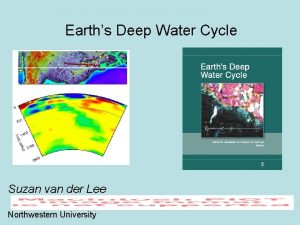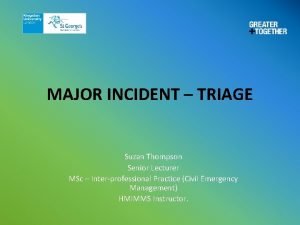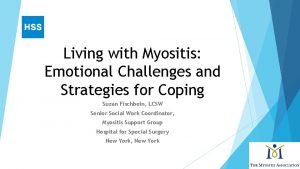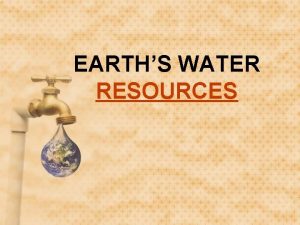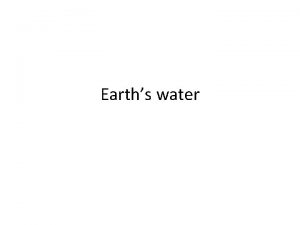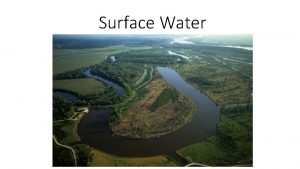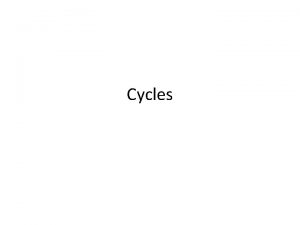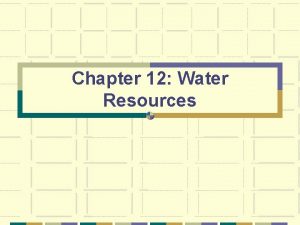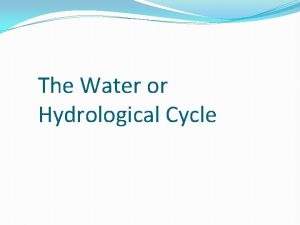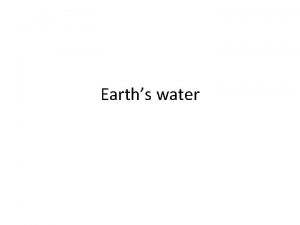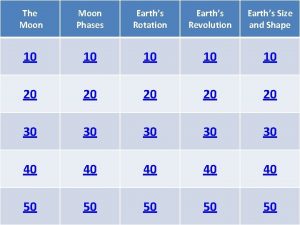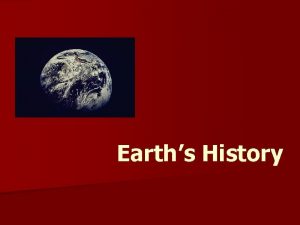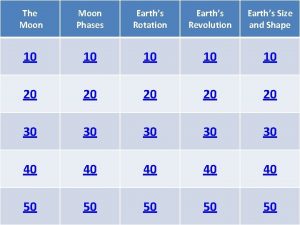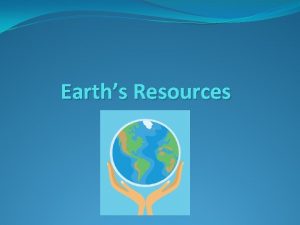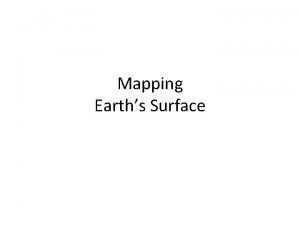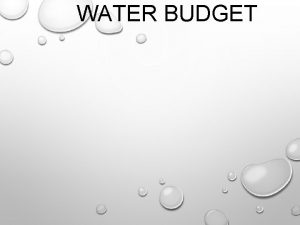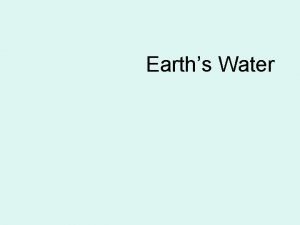Earths Deep Water Cycle Suzan van der Lee






























- Slides: 30

Earth’s Deep Water Cycle Suzan van der Lee Northwestern University

Feng et al. (2007); Van der Lee and Wiens (EDWC) mantle wedge seismically slow and wet, dry below?

Rupke et al. (EDWC) Mantle outgassing 90% efficient; at least 10% stays in mantle, and likely more in slab

Song and Helmberger (EDWC) lvz on 410 (red o) right next to “normal” mantle (white o)

Karato et al. (EDWC) melt on 410 from upwelling saturated wadselyite, but…

Predicted melt layer thinner than observed lvz < 7 km wd-->ol transition thickens with increasing H 2 O at undersaturated conditions Hirschmann et al. (EDWC)

Calculations at D=20 suggest that ol-->wd transition can be very thick at only 0. 1 wt % water velocity 45 0 ppm Phase transition interval (km) 40 200 ppm 35 500 ppm 30 1000 ppm 25 20 >25 km 15 10 5 0 (after Wood, 1995)

depth (k m) VSL, Italy PAB, Spain f = 0. 75 Hz f = 0. 62 Hz f = 0. 5 Hz f = 0. 4 Hz f = 0. 35 Hz f = 0. 3 Hz f = 0. 25 Hz f = 0. 2 Hz f = 0. 15 Hz Water would thus be an explanation for puzzling receiver functions, but… 410 660 KEG, Egypt

Hirschmann et al. (EDWC) <15 km With D=5 and 0. 1 wt % H 2 O transition would be less than 15 km thick

V low and Q very low in mantle wedge --> water V low, but Q high below 200 km --> warm Conder and Wiens (2006); Roth et al. (1999); Van der Lee and Wiens (EDWC)

Separate effects of water from other effects Shito et al. (EDWC)

Still some trade-off btw w and T Shito et al. (EDWC) Water above 400 km, from upwelling TZ or from slab

Smyth and Jacobsen (2006) Use other seismic measurements to evaluate the relative role of w and T, such as transition-zone discontinuity properties:

Braunmiller et al. (EDWC) TZ thickens but ol-->wd does not: deep SAm mantle dry (or saturated)

Suetsugu et al. (EDWC) Vp and 660: >1 wt % water near slab

410, 520, and Vs: >0. 2 wt % water Courtier and Revenaugh (EDWC)

Vd. Lee & Frederiksen (2005) Grand (2002) low Vs: < 1 wt% water low Vs above slab in top of lower mantle

Inoue et al. (EDWC) Experiments show that Shy-B is stable in TZ and cool slab

Komabayashi (EDWC) Calculations show that abc phases are stable throughout upper mantle in cool slab; breakdown occurs in top of lower mantle.

Hydrous TZ likely less dense than dry TZ, and: Water lowers the viscosity by 4 -5 orders of magnitude, at least above 300 km. Hydrous mantle can well up and hydrate lithosphere. Karato and Jung (2003); Karato (EDWC)

Deformation model Temperature and water-sensitive yield and thermal-mechanical feedback Ocean continent Boundary Sediment loading Mid Atlantic ridge Seafloor age turned into temperatures 70 km thick Lithosphere cross section shown Regenauer-Lieb et al. (2001)

Regenauer-Lieb et al. (2001) wet rheology 0 km -lithosphere 100 km -- lithosphere breaks only in wet conditions; subduction of dense lithosphere enabled. dry rheology time

Connecting past and future episodes of subduction su (F bdu ar ct all in on g p ) la continent (N America) te -- 0 km -- 200 -300 m. y. -- 660 km -- continent (N America) te la gp n cti ? ) u bd tic su tlan (A

Connecting past and future episodes of subduction

Connecting past and future episodes of subduction

Connecting past and future episodes of subduction

Connecting past and future episodes of subduction

Connecting past and future episodes of subduction

Present

Conclusions 1. Deep water cycle may sustain plate tectonics over many Gy. 2. Water in mantle is detectable in various ways § seismic V from tomography or triplication branches § Q/attenuation § discontinuity depths and properties 3. More work is needed § mineral physics: elasticity at p, T, and C § seismology: benchmarking, denser data (USArray!)
 Suzan van der lee
Suzan van der lee Water and water and water water
Water and water and water water Suzan alteri
Suzan alteri Triage sieve and sort
Triage sieve and sort Suzan fischbein
Suzan fischbein Deep asleep deep asleep it lies
Deep asleep deep asleep it lies Deep forest towards an alternative to deep neural networks
Deep forest towards an alternative to deep neural networks O the deep deep love of jesus
O the deep deep love of jesus The water cycle brainpop
The water cycle brainpop Water cycle the hydrologic cycle
Water cycle the hydrologic cycle Earth layers foldable
Earth layers foldable Earths roation
Earths roation Whats earths moon called
Whats earths moon called Forest desert tundra grassland
Forest desert tundra grassland What is the most abundant element on earth
What is the most abundant element on earth Plasticity in earth's layers
Plasticity in earth's layers Whats earths moon called
Whats earths moon called Thickest layer of the earth
Thickest layer of the earth Earths early atmosphere contained
Earths early atmosphere contained Earth layer foldable
Earth layer foldable Earths major crustal plates
Earths major crustal plates Earths orbit seasons
Earths orbit seasons Brown earth soil profile
Brown earth soil profile Earths physical features
Earths physical features Honey as fertilizer
Honey as fertilizer Whats the name of earths moon
Whats the name of earths moon Continental drift theory notes
Continental drift theory notes Earths crust
Earths crust Earths interior
Earths interior What does the earths tilt cause
What does the earths tilt cause What is atmosphere
What is atmosphere
